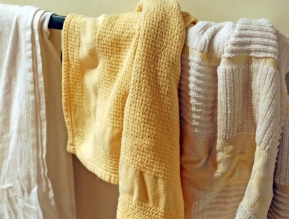What Are The Consequences Of A Less Active Life?
 The feminist movement opened the proverbial door for women who wanted out of the house.
The feminist movement opened the proverbial door for women who wanted out of the house.
But a recent study suggests that trading in aprons for pantsuits could be making women fatter than they’ve ever been. The modern female is doing fewer household chores, research found, which translates into fewer calories burned overall on a daily basis.
Daily life less active for women
The study, published in PLoS One, was follow-up research to a report released in 2011. The original research showed the extent to which Americans are sitting down on the job and lacking daily physical movement.
The current research analyzed how women’s physical activity has changed since leaving the home to join the workforce in the past several decades.
“Fifty years ago, a majority of women did not work outside of the home,” said Dr. Edward Archer, a research fellow with the Arnold School of Public Health at the University of South Carolina in Columbia.
Back then, he notes, household chores were a natural way to burn calories. But today, women are less active overall, burning about 150 fewer calories per day than their working parents did.
Women doing less housework in general
The study found that unemployed women decreased housework-related calorie expenditure by about 360 calories in the last 50 years or so. The numbers come out to about 33 hours a week in 1965 compared to 16.5 hours a week in 2010.
Working women were found to complete less than seven hours of household tasks per week in 2010 and burn 132 fewer calories than they did 50 years ago.
Swapping chores for screen time
As women’s activity level decreased, the researchers found their screen-based time – using computers or watching television – increased.
“The reallocation of time from active pursuits (i.e., housework) to sedentary pastimes (e.g., watching TV) has important health consequences,” the authors noted.
Source: Inquisitir
 Eating Disorder Self Test. Take the EAT-26 self test to see if you might have eating disorder symptoms that might require professional evaluation. All answers are confidential.
Eating Disorder Self Test. Take the EAT-26 self test to see if you might have eating disorder symptoms that might require professional evaluation. All answers are confidential.